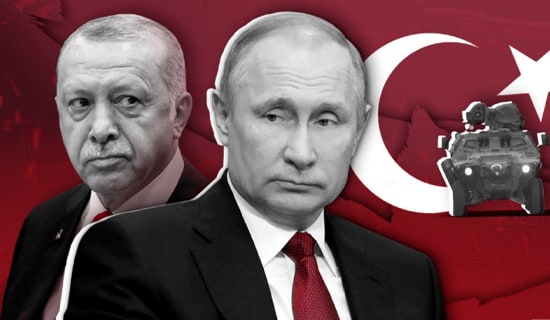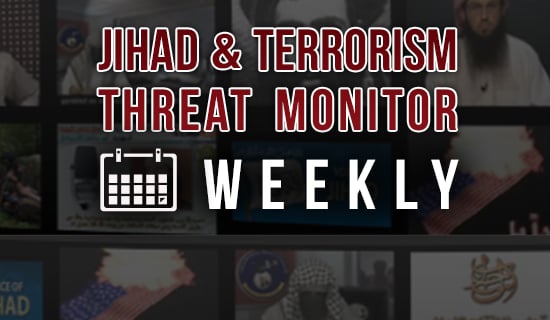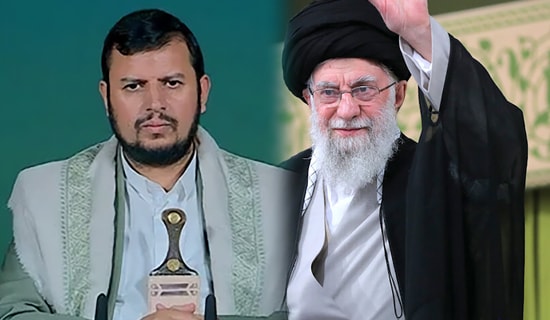
Four ISIS jihadis were arrested by Bangladeshi officials in December2015
On February 12, 2016, Bangladesh's State Minister for Foreign Affairs, Md. Shahriar Alam, dismissed media reports that the Islamic State (ISIS) is gaining ground in Bangladesh, saying: "On the ground, in the investigations that we have carried out, we have as yet found no evidence of ISIS links."[1]
Alam, who made the statement during a visit to Washington, was speaking in the context of a series of terror attacks in Bangladesh last year for which ISIS claimed responsibility. He refused to share the Western assessment that this was a serious threat, noting: "I do not think [that] any terrorist or groups would ever gain permanent or semi-permanent ground in Bangladesh."[2]
The government of Bangladeshi Prime Minister Sheikh Hasina, who is in her second term, has severely cracked down on Bangladeshi jihadi groups, especially the Jama'atul Mujahideen Bangladesh (JMB). This has forced some of its members to flee to the neighboring state of West Bengal in India. Shahriar Alam's security assessment should be judged against some of the terror attacks that have taken place in recent months, as detailed below.
Attacks In Bangladesh Claimed By ISIS
On September 28, 2015, Italian national Cesare Tavella, an employee of the Netherlands-based organization ICCO which works in development sector, was killed by jihadi terrorists in the capital Dhaka. Immediately after his killing, ISIS issued a statement in Arabic claiming responsibility and warning that people from "the Crusaders alliance" would not be safe in Muslim countries.[3] This was the first declaration that the ISIS is present in Bangladesh.
On October 3, Japanese national Kunio Hoshi was followed by jihadi terrorists and shot dead in the town of Kaunia in northern Bangladesh. ISIS immediately issued a statement, via the pro-ISIS leading jihadi forum Shumoukh Al-Islam, claiming responsibility for Hoshi's killing, identifying him as the "Japanese infidel," and warning that the attack was a continuation of the group's targeting of members of coalition countries that are fighting in Syria and Iraq.[4] The killings of Cesare Tavella and Kunio Hoshi were timed to coincide with ISIS's Arabic-language announcement.
On November 18, a third foreigner - Italian priest Piero Parolari - was followed by terrorists mounted on motorcycles and was dead at Mirzapur in Dinajpur district. According to a U.S.-based threat monitoring group, this attack too was claimed by ISISI; the group's role in attributing the attacks in Bangladesh to ISIS was, however, questioned by the Bangladeshi media.[5]
On October 5, Bangladeshi Christian priest Luke Sarker was attacked at his home, but in that case six individuals arrested by police were suspected to be members of Jama'atul Mujahideen Bangladesh (JMB).[6] Also, on November 26, 10 Christian priests received death threats, in a letter sent to one of them - but not by ISIS.[7]
On the night of October 23-24, in Dhaka, a series of bomb attacks killed one person and wounded over 60 were wounded as Shi'ite mourners gathered for the Ashura procession to mark the annual day of mourning for Imam Hussein, the grandson of the Prophet Muhammad.[8] This was believed to be the first attack on Shi'ite Muslims in Bangladesh. ISIS claimed responsibility, saying: "The soldiers of the Caliphate in Bangladesh" had detonated explosives during "polytheistic rituals."[9]
On November 26, an attack took place at a Shi'ite mosque at Bogra, 200 km northwest of Dhaka, killing the muezzin and wounding three others;[10] ISIS claimed responsibility for the attack.[11] Since Shi'ite and Sunni Muslims have coexisted peacefully in that area for decades, it could be concluded that the attack was a deliberate attempt at sparking sectarian war in the area. This was second attack on Shi'ite Muslims in Bangladesh within a month.
On November 4, a police checkpoint was attacked in the Baroipara area, near Dhaka. A media report stated that ISIS had claimed responsibility for the attack, and that the group had stated: "In a security operation, Allah enabled the soldiers of the state in Bangladesh to attack a police checkpoint."[12] A few days later, on November 10, a soldier was attacked near a military camp in Dhaka.[13]
The preceding week also witnessed similar small-scale attacks: On October 22, a policeman was stabbed to death at Gabtoli checkpost in Dhaka.[14] On October 31, Faisal Arefin Dipan, of the book publishing house Jagriti Prokashony, was hacked to death in his office; several hours previously, another publisher, Ahmedur Rashid Tutul, owner of the publishing house 'Shuddhaswar,' was wounded in an attack along with others in his office.[15] These attacks were not claimed by ISIS.
On December 25, a suicide bomber blew himself up at a mosque of Ahmadi Muslims at Bagmara, 250 km from Dhaka, wounding three. Ahmadis are not considered Muslim by the mainstream Sunni Deobandi and Barelvi organizations as well as by the jihadi groups. ISIS issued a statement claiming responsibility for the attack and calling Ahmadis "polytheistic."[16] Although the attack was claimed by ISIS, it appears the attack may have been carried out by the JMB because Bagmara is the stronghold of JMB militant leader Siddiqul Islam Bangla Bhai, who was executed in 2007.[17]
Should Bangladesh Worry About The ISIS Threat?
Bangladesh has witnessed two types of jihadi attacks in recent years: a) a series of targeted killings of liberal Bangladeshi bloggers, responsibility for which is generally claimed by the Ansarullah Bangla Team (ABT), which affiliated itself with Al-Qaeda in the Indian Subcontinent (AQIS); and b) the series of terror attacks discussed above, many of which were claimed by ISIS. Currently, there are attempts to recruit young Bangladeshis to work for ISIS, both from within Bangladesh and from abroad; additionally, regular arrests have been made by Bangladeshi officials.[18]
Jihadism in Bangladesh has roots in the 1980s Afghan jihad. Jamaat-e-Islami, an Islamist organization founded by Abul A'ala Maududi in 1941, has been the main feeder organization for jihadi groups across South Asia. Following the creation of Pakistan in 1947 and of Bangladesh in 1971, Jamaat-e-Islami split, for all practical purposes, into four branches that are ideologically similar but organizationally not connected: a) in India; b) in India's Jammu & Kashmir; c) in Pakistan; and d) in Bangladesh. In the last three, jihadi groups have been sheltered by mosques, madrassas and organizations affiliated with Jamaat-e-Islami.[19]
In Bangladesh, young men emerging from Jamaat-e-Islami formed the Jama'atul Mujahideen Bangladesh (JMB). It is from the JMB - many of whose members fled to India following the crackdown by the Sheikh Hasina government - that the Ansarullah Bangla Team (ABT) emerged. Two Bangladeshi nationals were found among a group of five ISIS terror suspects arrested by Indian officials in Delhi in mid-January.[20] There is a continuing overlap between the JMB and ABT. In the cases of the terror attacks claimed by ISIS, it does not appear that the ISIS's top leadership is planning and executing the operations in Bangladesh.
This is similar to the AQIS's claims of terror attacks, especially those on the secular bloggers, in Bangladesh. In those cases too, it did not appear that the AQIS's top leadership was planning and executing the attacks in Bangladesh. However, in both the cases, AQIS and ISIS claimed the attacks. In both the cases, it does not appear that there is top-down linking with the local jihadi groups. It is more like bottom-up links being created by the local militants with the ISIS, especially as they have seen the successful use of social media by ISIS. The current series of ISIS-claimed attacks appear to have been planned by the locals who, inspired by the spectacular success of ISIS in Iraq and Syria, sought to find support from the ISIS leadership.
The fact that the local militants have linked up with the ISIS was ascertained when Issue No. 12 of Dabiq, ISIS's English-language online magazine, published a lengthy article titled "The Revival of Jihad in Bengal - With the Spread of the Light of Khilafah."[21] While the article itself was short on information on ISIS operations in Bangladesh, it traced the history of jihad in Bengal (which includes Bangladesh and India's West Bengal state).
Bangladesh's Sheikh Hasina government is capable of fighting the ISIS threat. However, the greater, long-term threat for Bangladesh could come from the mass fundamentalist organizations like Hefajat-e-Islam which the Sheikh Hasina government sought to coddle in order to win elections.[22]
* Tufail Ahmad is Director of MEMRI's South Asia Studies Project
Endnotes
[1] Business-Standard.com (India), February 13, 2016.
[2] Business-Standard.com (India), February 13, 2016.
[3] ISIS In Bangladesh Claims Responsibility For Assassinating Italian National Cesare Tavella, MEMRI JTTM Report, September 28, 2015.
[4] ISIS Claims Responsibility For Assassinating A Japanese National In Bangladesh, MEMRI JTTM Report, October 3, 2015.
[5] DhakaTribune.com (Bangladesh), November 19, 2015 & TheDailyStar.net (Bangladesh), October 27, 2015.
[6] DhakaTribune.com (Bangladesh), November 19, 2015.
[7] DhakaTribune.com (Bangladesh), November 27, 2015.
[8] DhakaTribune.com (Bangladesh), November 24, 2015.
[9] ANInews.in (India), October 25, 2015 & BDnews24.com (Bangladesh), October 24, 2015.
[10] BDNews.com (Bangladesh), November 27, 2015.
[11] BDNews.com (Bangladesh), November 27, 2015.
[12] NYTimes.com (U.S.), November 5, 2015.
[13] BDNews.com (Bangladesh), November 10, 2015.
[14] BDNews.com (Bangladesh), October 22, 2015.
[15] BDNews.com (Bangladesh), October 31, 2015.
[16] DhakaTribune.com (Bangladesh), December 26, 2015.
[17] NDTV.com (India), December 27, 2015.
[18] Bangladesh Arrests Four ISIS Militants, Their Leader Trained In Pakistan, MEMRI JTTM Report, December 29, 2015. For a detailed discussion of the ISIS threat by Bangladeshi experts, see, After Foreign Nationals Killed By ISIS, Bangladeshi Intellectuals Debate Extremism And ISIS Threat To Bangladesh, MEMRI JTTM Report, October 15, 2015.
[19] For a discussion of Jamaat-e-Islami's role in South Asia, see the author's article, Separate Politics From Religion, The New Indian Express (India), December 12, 2013.
[20] ClickIttefaq.com (India), January 16, 2016.
[21] Article In Issue 12 Of ISIS's English-Language Magazine 'Dabiq' Confirms ISIS Carried Out Recent Killings In Bangladesh, Says: 'The Soldiers Of The Khilafah In Bengal Are Busy Preparing For Further Attacks On The Kuffar', MEMRI JTTM Report, December 9, 2015.
[22] For a discussion of Hefajat-e-Islam, see the author's article, Liberty in Peril in Bangladesh, The New Indian Express (India), July 30, 2013.





